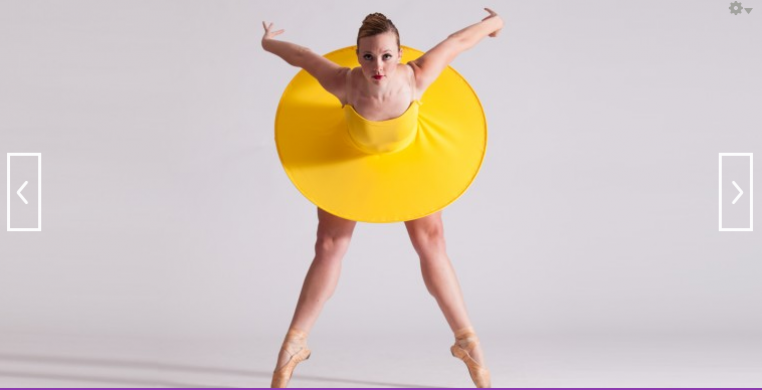It takes a lot of courage to be a ballet company in Chicago, and Ballet 5:8 shows gutsy determination to contribute a unique perspective to the mix that includes such established luminaries as The Joffrey, The Joffrey Studio Company, Ballet Chicago, and The Ruth Page Civic Ballet.
The spiritual quest that propels this all-female company, comprised of ten professionals, and augmented by two apprentices and a flock of advanced students from the Ballet 5:8 School of the Arts, is a noble one. A loosely narrative agenda underlies each of the three works exploring faith and life questions through the language of classical ballet in “The Beauty of Introspection,” offered last weekend at the Athenaeum Theatre.
Company director Julianna Rubio Slager’s “The Four Seasons of the Soul” (2014) opened the program. Set to Vivaldi’s “The Four Seasons,” the piece celebrates the company’s technical proficiency and Slager’s command of spatial design in “a journey through the complex spiritual life of a Christian believer.” Clean, crisp point work raced through a flurry of ever-changing group patterns, reflecting the urgency of Vivaldi’s music. Generic balletic rejoicing characterized “Spring,” as Lauren Ader-Cumpston danced with airy perfection amidst her light-hearted minions. Laura Schlatter brought a robust sensuality to “Summer." Lorianne Barclay’s mod yellow disks, doubling as tutus and flower petals, shimmered in geometric bourées and angular point work in the only section that departed radically from standard ballet formations, suggesting fascinating possibilities. In her role as dancer, Barclay dramatized the suffering of disillusionment and abandonment in “Fall,” while Brette Benedict’s lovely solo work showed expressive range and considerable technical command in “Winter.” Slager’s command of ballet's codified language, and her adept use of group spatial patterns kept the action flowing and pleasing to the eye, but the fervent message her dancers’ facial expressions seemed to want to deliver was not enough to transcend customary movement constructs.
Preston Miller’s jazzy barefoot ballet, “And Mercy” asked these classically-trained dancers to “get down,” both literally and figuratively, with plenty of earthy jazz moves and modern dance rolls to the floor interspersed with ballet pirouettes, sissones, and congetemps. Staccato accents, head rolling, and athletic running led to a puzzling episode with one dancer lying on the floor, opening legs wide to the audience, suggesting perhaps immodesty, and the chorus gathered around her, clasped hands and pointed fingers oscillating. Judgment? Whatever its intended meaning, the well-rehearsed dancers carried off the choreography with conviction and authority, but the movement consisted of standard jazz dance clichés and a superficial nod to the choreographer’s stated intention to explore judgment and mercy.
Slager’s joyous “Mi Familia” (premiere) concluded the program with a lively celebration of her Latin roots. Three female characters, a mother, an aunt, and a daughter, led the festivities with loosely delineated relationships. Lorianne Barclay’s simple but effective costumes added plenty of flounced skirt-swishing and colorful spectacle. Marinna Krus was especially delightful as “Mija” the young daughter in refreshing solo work that captured the essence of a young woman’s zest for life and love of family. The choreography did a great job of integrating Spanish character dance with classical point work. Engaging group sequences once again highlighted Slager’s skill in creating eye-pleasing patterns. We are willing to forgive her a bit too much repetition of a good movement theme, when variation would have been welcome, because the highly watchable, entertaining dancing this troupe delivered made a thoroughly rousing finale to the evening.
Spirituality and faith have fueled the artistic impulse in humanity for millennia, and have been the source of some of the world’s greatest art, but always, the art stands on its own first and foremost as art. Whether or not it also gives testimony to belief systems, faith, or religious doctrine is secondary and may or may not be relevant to its audience’s appreciation of the work. That’s entirely up to the individual and his/her personal experience of the art.
Overly ambitious thematic agendas have a way of limiting, or even obscuring, creative freedom and artistic growth, and caution must always be exercised to keep “the message” from getting in the way of the art. While Ballet 5:8 is fueled by noble intentions and the leadership of a talented and energetic director, artistic goals can be even more deeply realized by accessing and developing the creative tools of the choreographic art. The greatest choreography conveys its message not through intellectualization but rather through movement that reflects viscerally the deepest physical impulses in response to life. Dance drama works when it respects the tenets of solid dramatic principles, without relying on facial choreography, or telegraphing emotion that exists extraneously to the movement itself. Daniel Nagrin lends inspiration and enlightenment on this subject in his book, “The Six Questions: Acting Technique for Dance Performance.” It’s a read well-worth any serious dance-maker’s time!

